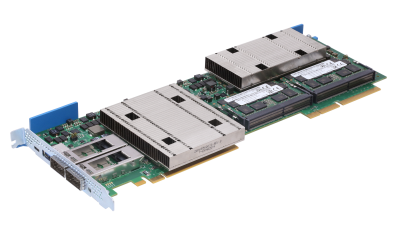- Related articles
- Optical Transceivers for Cisco WS-C2960S-24PDL-RF Switch
- Optical Transceivers for Cisco SG350-28MP-K9-UK Switch
- All Cisco DWDM-XFP-32.68's information (List price, Specs, Datasheet PDF, Compatibility ma
- Cisco Optical Module Decryption Method
- All Cisco XENPAK-10GB-ER's information (List price, Specs, Datasheet PDF, Compatibility ma
- What media type is 1000BASE-T?
- New: About Cisco 4000 Series ISR Gigabit Ethernet WAN Modules
- Optical Transceivers for Cisco WS-C3650-48FS-L Switch
- All Cisco SFP-OC3-LR1's information (List price, Specs, Datasheet PDF, Compatibility matri
- Cost Effective Compatible Cisco Transceivers

Today’s NICs are designed to do more than just connect servers and other components to the network. They’re also improving network performance by taking on more computing-intensive tasks. Standard NICs, for instance, used to require three processor cores just to run the network switch functions, plus a fourth core to manage the creation and operation of virtual machines (VMs). The latest NICs, however, offload all the switch functions to their own processor, freeing up those cores for other uses. Intelligent NICs complete with software that is ready for SDN and NFV deployment.

Intelligent Network Interface Card
The Intelligent Network Interface Card delivers the industry’s broadest range of compatible boards for security (SSL/IPsec, SRTP, and Data-at-Rest), TCP, compression/decompression, and Intrusion Prevention/Anti-virus (IPS/AV) processing in secure network services and storage applications. The OCTEON XL boards enable the fastest time to market for appliances from 1Gbps to 14Gbps performance. These boards integrate unique capabilities such as LAN bypass for high-availability applications, as well as optional C/C++ programmability of the on-board OCTEON or OCTEON plus Multi-core MIPS64 processor.
Intelligent Network Interface Card are targeted for use in a wide variety of OEM networking, security, and storage appliances, based on the widely deployed PCI/PCI-X architecture. Gigabit Ethernet network interface cards (NICs) targets Secure Network Services and compression acceleration in security, storage and networking appliances with up to 6Gbps performance. This family includes 2 different PCI-e NICs, with in-line hardware offload for TCP, compression/decompression, Security (SSL/IPsec, SRTP, and Data-at-rest), intrusion prevention and anti-virus applications to deliver the most advanced, multi-function acceleration. Optional C/C++ programmability of the multi-core processor on the card allows vendors to easily add proprietary features in a field upgradeable manner.
Summary
Consider the design of an Intelligent Network Interface Card. The designers believed that a system designer would like to have a network interface card (NIC) which has a specified functionality stable over the lifetime of the system, even though the NICs will periodically be replaced. To achieve this goal, they provide a NIC design that uses programmable elements. With the programmable elements, the NIC can provide the functionality that the system designer wants over the system's lifetime. Then, as the NIC is changed over the system's lifetime (e.g., using a different network technology), the new NIC can still provide the same functionality as the original NIC-thus allowing the system designer take advantage of new network technologies.





































































